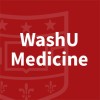Does More Practice Improve Arm Movement After Stroke?
Stroke

About this trial
This is an interventional treatment trial for Stroke focused on measuring stroke, upper extremity, paresis, function, translational research
Eligibility Criteria
Inclusion Criteria:
- Ischemic or hemorrhagic stroke as determined by a stroke neurologist and consistent with neuroimaging
- Time since stroke will include subjects 6-months or more post-stroke
- Cognitive skills to actively participate (score of 0-1 on items 1b and 1c of the NIH Stroke Scale (NIHSS)
- Unilateral upper extremity weakness (score of 1-3 on item 5 (arm item) on the NIHSS)
Exclusion Criteria:
- Subject unavailable for 2-month follow-up
- Inability to follow-2-step commands
- Psychiatric diagnoses
- Current participation in other stroke treatment (i.e.- Botox)
- Other neurological diagnoses
- If participant lives further than one hour away and is unwilling to travel for assessment and treatment sessions.
- Pregnancy
Sites / Locations
- Washington University School of Medicine
Arms of the Study
Arm 1
Arm 2
Arm 3
Arm 4
Experimental
Experimental
Experimental
Experimental
Low Movement Dose, 3200 total reps
Medium Movement Dose, 6400 total reps
High Movement Dose, 9600 total reps
Individual Maximum High Movement Dose
he experimental intervention consists of intensive task-specific upper extremity movement rehabilitation which are appropriately graded and progressed for each subject. This intervention will provide progressive training of these essential components required for upper extremity movement through repeated practice of various tasks, with the desired goal of building the subject's capacity to perform a multitude of UE functions. Subjects will participate in the intervention for eight weeks or more depending on the group they are randomized to.
he experimental intervention consists of intensive task-specific upper extremity movement rehabilitation which are appropriately graded and progressed for each subject. This intervention will provide progressive training of these essential components required for upper extremity movement through repeated practice of various tasks, with the desired goal of building the subject's capacity to perform a multitude of UE functions. Subjects will participate in the intervention for eight weeks or more depending on the group they are randomized to.
he experimental intervention consists of intensive task-specific upper extremity movement rehabilitation which are appropriately graded and progressed for each subject. This intervention will provide progressive training of these essential components required for upper extremity movement through repeated practice of various tasks, with the desired goal of building the subject's capacity to perform a multitude of UE functions. Subjects will participate in the intervention for eight weeks or more depending on the group they are randomized to.
he experimental intervention consists of intensive task-specific upper extremity movement rehabilitation which are appropriately graded and progressed for each subject. This intervention will provide progressive training of these essential components required for upper extremity movement through repeated practice of various tasks, with the desired goal of building the subject's capacity to perform a multitude of UE functions. Subjects will participate in the intervention for eight weeks or more depending on the group they are randomized to.
Outcomes
Primary Outcome Measures
Secondary Outcome Measures
Full Information
1. Study Identification
2. Study Status
3. Sponsor/Collaborators
4. Oversight
5. Study Description
6. Conditions and Keywords
7. Study Design
8. Arms, Groups, and Interventions
10. Eligibility
12. IPD Sharing Statement
Learn more about this trial
